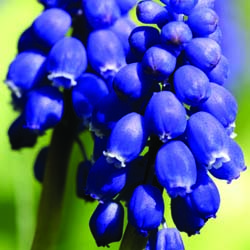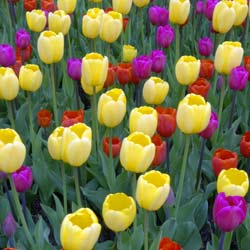Spring bulbs faithfully reappear at the most advantageous time – after a long, cold winter. Most spring bulbs are perennial and multiply in number every year. Seemingly carefree, bulbs do require a bit of nurturing to ensure that they perform their very best for years to come.
- Good soil drainage is important to prevent bulbs from rotting. Plan your site accordingly.
- When planting bulbs in the fall, add a high phosphorus fertilizer to the planting hole for the development strong roots. Bone meal is an excellent choice.
- Bulb foliage will often break through the soil after a few warm winter days. This vegetation is hardy and its exposure to the cold will not damage your plants or prevent them from blooming.
- Fertilize bulbs as plants are emerging from the ground. Do not fertilize them once flowers appear. Use a complete fertilizer that is high in phosphorus, like a granular 5-10-5, to assist in foliage and flower development.
- After blooming, cut back the flower stalk leaving the bulb foliage. This will force the plant to put its energy into the bulb for next year’s flowers and not into seed production.
- Allow the leaves to die back naturally. The leaves are vital for producing food that is stored in the bulb for next year’s growth. Cut bulb leaves, never pull them, once they have turned yellow. Do not tie leaves as this reduces the leaf surface required for adequate food production.
- When the foliage dies back the bulb is dormant, this is the proper time to dig and separate bulbs if necessary. Flowering will often be reduced when bulb beds become over-crowded. If division is needed, bulbs should be dug and stored in a well-ventilated place and replanted in the fall.
- Fertilize bulbs again in the fall with a high-phosphorus, granular fertilizer.






